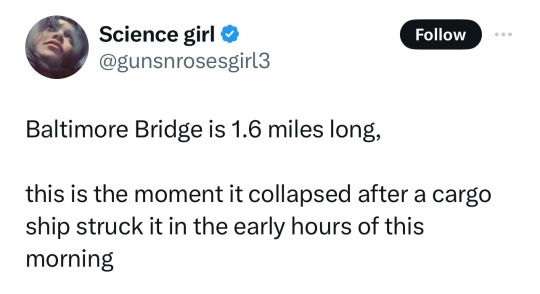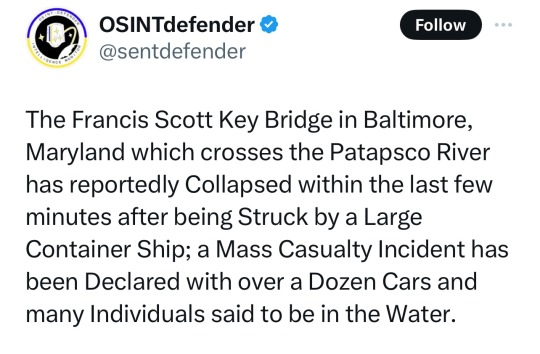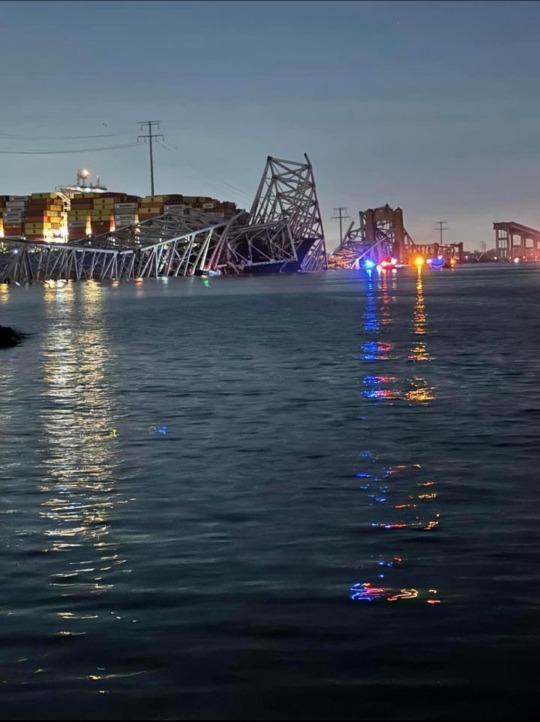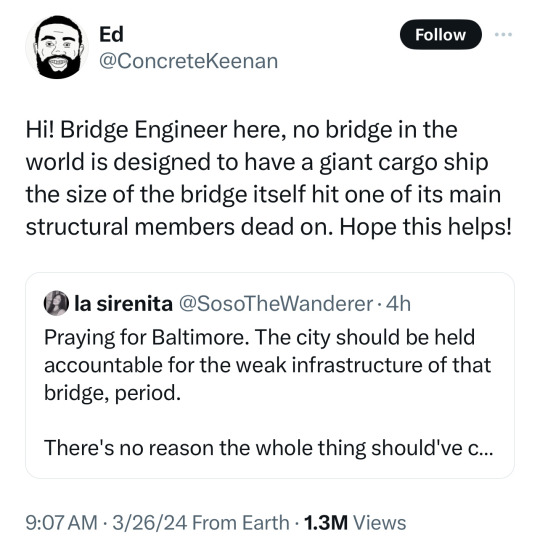#infrastructure issues
Explore tagged Tumblr posts
Text
Clovis Site Vacant 8 Years, California Development Stalls

Challenges Hindering Clovis DevelopmentIn Clovis, a myriad of obstacles are hindering urgently needed development opportunities. This casts a long shadow over its growth potential and diminishes investor allure. The city's updated zoning ordinances aim to encourage mixed-income and higher-density developments. However, they introduce zoning delays due to stringent timelines and compliance requirements. Developers face significant hurdles maneuvering these parameters. This hampers timely land use change requests. The application period for such requests is limited, as they must be submitted by August 8, 2025, by 4:00 p.m., to be considered timely. Infrastructure limitations compound these problems, making development arduous. Traffic congestion, particularly on Highway 168, creates logistical nightmares. This diminishes the appeal of prospective project sites. Public transit inadequacies force reliance on personal vehicles. As a result, rush-hour bottlenecks intensify, compromising effective circulation planning. This planning is essential for accommodating new projects. Despite policies incentivizing affordable housing, infrastructure costs remain a formidable barrier, especially for water and sewer. Without timely infrastructure upgrades, Clovis's existing systems strain under pressure. This threatens to undermine future development initiatives. It also stalls anticipated economic growth.Proposed Solutions and Future DirectionsIs the city of Clovis finally on the brink of transformation?The multi-year General Plan update and land use changes appear to be ushering in new opportunities for growth and development.Community engagement remains pivotal in this endeavor.Strategic use of development incentives is aimed at lowering financial barriers.Recent zoning amendments, increased density provisions, and affordable housing initiatives are significant steps forward.Developers are encouraged through partnerships, reduced fees, and other incentives designed to stimulate construction.The city’s collaboration efforts with local developers showcase a proactive stance.Moreover, public facilities expansion aligns with infrastructural enhancements to support anticipated growth.A structured approach guarantees that development projects cater to public service requirements.This helps in maintaining community standards.University towns demonstrate how consistent year-round stability in rental markets can facilitate economic growth and community development initiatives.InitiativeImpactStakeholdersZoning AmendmentsIncreased housing densityDevelopers, City OfficialsAffordable Housing OrdinanceHousing AffordabilityResidents, DevelopersFee WaiversDevelopment Cost ReductionDevelopers, InvestorsInfrastructure InvestmentsCommunity Growth SupportCity, Educational DistrictDeveloper PartnershipsTrust and EfficiencyDevelopers, City OfficialsImplications of Regional Growth DynamicsCalifornia's shifting development terrain is set against the backdrop of regional growth dynamics that continually reshape economic and housing trends.As the population surges toward an estimated 44.1 million by 2030, economic disparities and affordability weigh heavily on both urban and rural regions.Larger counties like Los Angeles and San Diego, dense with economic opportunities, contrast starkly with expanding inland regions such as Lassen and Fresno.These inland areas offer more affordable housing, responding to the demand driven by urban overflow.Despite projected economic growth in the "high twos" percentage range by 2025-26, economic momentum is not evenly distributed.Persistent vacancies like the Clovis site symbolize missed economic opportunities and potential growth.Foreign direct investments and infrastructure improvements are crucial for leveraging growth potential.Yet, stalled developments limit new job creation, hindering economic progress.In cities like Chicago's CRE market, office and retail sectors struggle while industrial properties show resilience.The need for balanced residential and economic adaptation is urgent.
Addressing this can help mitigate the growing chasm in wealth distribution and enhance regional competitiveness.AssessmentThe prolonged vacancy of the Clovis site highlights the complex interplay between bureaucratic stagnation and regional development challenges.Despite well-intentioned proposals, tangible progress remains elusive.This situation impacts not only local economic growth but also signals broader implications for regional real estate dynamics.Understanding these challenges and potential solutions is vital.Stakeholders aiming to steer and capitalize on California's evolving market terrain must pay close attention.Decisive action will be essential.Only then can the site's potential be accessed and contribute to regional prosperity.
0 notes
Text
A Pakistani Freelancer’s Fight Against Crappy Internet: A Casual Chat
Hey, Let’s Talk About Something Wild Picture this: you’re hustling on a gig, chatting with a client halfway across the world, and—bam—your internet drops. Total blackout. Sounds like a nightmare, right? Well, for freelancers in Pakistan, this isn’t just a random bad day—it’s basically their life. I stumbled across this story from a guy named Hisham Sarwar, a Pakistani freelancer who spilled the…
#digital economy#fiverr bans#freelance#freelancing#freelancing challenges#infrastructure issues#internet outages#pakistan freelancers#remote-work#side-hustles#writing
1 note
·
View note
Text
MGM Medical College Hostel Condition Crumbles Under Heavy Rains
Students Evacuate as Jamshedpur’s Medical Education Hub Faces Crisis Key Points: • Rainwater floods MGM Medical College hostel in Jamshedpur • Building at risk of collapse, students forced to evacuate • Health Minister’s home district faces medical education setback JAMSHEDPUR – Mahatma Gandhi Medical College’s student hostel in Jamshedpur faces severe structural issues, forcing evacuations…
#Cyclone Impact#education#government colleges#Health minister#Infrastructure Issues#Jamshedpur#Jharkhand#Medical Education#MGM Medical College#NEET#Student Hostel Crisis
0 notes
Text









The crew of a massive container ship that crashed into the Francis Scott Key bridge in Baltimore early Tuesday warned of power issues before the collision, which caused the bridge to collapse into the frigid Patapsco River, officials said.
Maryland Gov. Wes Moore said the warning from the ship’s crew likely saved lives.
“We’re thankful that between the mayday and the collapse, that we had officials who were able to begin to stop the flow of traffic so more cars were not on the bridge,” Moore said. He called those officials heroes.
Moore noted that the bridge was up to code at the time of the collapse. He said the collapse was a “shocking and heartbreaking” event for the people of Maryland who have used the bridge for 47 years.
(continue reading)
#i was in dc this weekend for a funeral#we bounced over to baltimore to visit some family friends from childhood#i drove over that bridge twice!!#francis scott key bridge#baltimore#bridge collapse#baltimore bridge#glen burnie#i dont think it was an infrastructure problem#but if oversized cargo ships can gain that much momentum#then maybe they should be required to come to a complete stop#prior to going under a commuter bridge#that or maximum ship size requirements by bridge#or maybe use tugboats??#it seems more like a regulation issue#and yes - even if it was an accident#someone still needs to be held accountable#or it may happen again#a very similar incident happened in my hometown#i think about 4 or 5yrs before i was born#sunshine skyway bridge
4K notes
·
View notes
Text
money makes people evil sounds like such a childish and simple take but i genuinely believe it more and more every day.
#like reading these news about oprah not opening her private road to people fleeing the tsunami in hawaii and it's like#youre already a billionaire settler in a place with millions of tax loopholes#the least you can do is be decent enough to let people use the infrastructure needed to flee the area#whats the issue like are they gonna damage your road#if they do damage your road you can literally hire someone within the hour to clean it up and fix it#like this is so silently evil to me idk#mimi.txt
27 notes
·
View notes
Text
I have a request for people with experience with wheelchairs, if you personally use/used them or have people in your life that do: PLEASE COMPLAIN ABOUT THEM TO ME! TELL ME ABOUT THE WAYS IN WHICH THEY CAN SUCK! IN GENERAL OR SPECIFICS!
I need this information for a project I'm doing in my design class, wherein my group is going to attempt to prototype a wheelchair with both offroad and indoor capabilities, per say, that is still reasonably light and inexpensive. I'm asking this of you all on tumblr because to begin our project, we need to familiarize ourselves with the nature of this problem. We want our solution to actually be made with the opinions of wheelchair users in mind. I would be incredibly grateful if anyone could reblog or comment with any gripes they have about wheelchairs, especially in relation to their maneuverability, but anything works! Thank you so much for your time!
#disability#disabled#disabilties#physically disabled#sorry about the crosstagging this is not my side of tumblr#thanks again if anyone responds! or even spreads this around#i also am very aware that a lot of these issues are societal#with infrastructure not being designed for accessibility#and the affordability issue is a pathetic healthcare system failure (at least in the US)#but alas. this is what i get for going to engineering school. i must design mere products
95 notes
·
View notes
Text
dude why don't we have more public benches throughout towns. I'm fucking disabled if I have to walk the mile back home after work I'm either not gonna make it or I'm gonna end up laying motionless on the floor for the next half hour
#even just one every half a mile.#I Cannot Do This#and I mean it's not that I can't walk I'm perfectly capable of walking.#I just need to be able to sit down after a few minutes#as long as I can do that I could travel for miles#but NO#no benches 4 me :(#it's so sad istg#disabled#physically disabled#disability#chronic pain#chronic illness#chronically ill#mobility aid#mobility issues#benches#public infrastructure
127 notes
·
View notes
Text
// I think most people would be surprised how many very critical websites and applications are being run by one very tired and underpaid engineer. I’m not saying it’s a good thing, but it’s not rare.
I once worked on an app that was heavily used by hundreds of millions of people daily and that thing was throwing over 30,000 alerts every night. The entire team for that app was me and one dude in Belarus. We slowly ground that alert number down to 0. It really depends what your infrastructure looks like, but as long as you’re not actively developing new features, you can keep software in maintenance mode without a massive staff.
Obligatory, hopefully tumblr doesn’t die, but imo this doesn’t seem like a big deal to me from a software perspective.
#.ooc#they clearly have proper blue/green deployment#CI/CD seems extremely healthy#bugs are different from infrastructure#if the infrastructure were bad then the site would fall over every 5 minutes#and each deploy would tank the site for like 3 days#I’ve never seen a bad deploy on tumblr#I’m sure they’ve had them bc everyone does#but I’ve never SEEN it#which means they have proper rollback mechanisms in place#which is honestly more than most companies can say#I’ve seen devs on other apps forced to fix major issue on the live environment#because they literally didn’t have the infrastructure to roll back#for example it’s obvious to me that Twitter had absolutely dogshit infrastructure even before Elmo wrecked it and fired the staff
10 notes
·
View notes
Text
Kinda wild how historians use infrastructure that produces enough food for citizens to philosophize, innovate, and create art instead of spending every second of their lives working, bc otherwise they’d starve, to help define the birth of ancient civilizations, and still modern society is OBSESSED w profit, control, and the post-WW2 fictitious “productive patriot” ideal, and as such, w every person working every second of their lives bc otherwise they’d starve
Even w advancements in science / technology, a resource surplus that could support the planet’s entire population, and the invention of industrialized processes that ensure minimal manual labor, we still measure a person’s worth and right to life by the labor they can produce and their willingness to sacrifice themselves for a job / employer that would only ever sacrifice one thing in return - them
Like we’re really deep throating our own tails with this one
#vent#history#world history#ancient history#profit#capitalism#anti capitalism#philosophy#philosophical#industrial innovation#innovation#industrialization#technological advancements#ancient civilizations#historian#infrastructure#productivity#toxic productivity#societyandculture#societal expectations#societal norms#societal commentary#societal issues#societal critique#socialism#communism#i’m just rambling
8 notes
·
View notes
Text

AlterMidya on Twitter @altermidya:
LOOK: Filipino fisherfolks and environmental groups protest in front of the Netherlands embassy in Makati City today, March 22, to demand justice for what they call "grave corporate abuse" by Dutch dredging company Boskalis Westminster NV.
According to Kalikasan - People's Network for the Environment, the Dutch company is involved in several reclamation projects in the country such as the San Miguel Corporation's New Manila International Airport (NMIA) in Bulacan.
NMIA is considered by Boskalis as their "largest project in history."
“Boskalis is profiting from a project that bypassed environmental and social scrutiny, ignored warnings from impact assessments, and, worst, used military intimidation to coerce ‘consent’ from affected communities," said anti-reclamation activist Jhed Tamano.
The groups also seek accountability from the Dutch export credit agency Atradius Dutch State Business for supporting the construction of NMIA by providing export credit insurance valued at EUR 1.5 billion.
"We urge the Netherlands government to investigate corporate abuses by Dutch companies and -- until these abuses are thoroughly investigated -- to pressure the Philippine government to halt the airport project,” said Jonila Castro of Kalikasan.
Meanwhile, environmental advocates also protest in Papendrecht, Netherlands, where the Boskalis Westminster NV headquarters is located.
Photos by John Carlo Magallon
2024 Mar. 22
#no to land reclamation#philippines#corporate violence#netherlands#environmental issues#fishing industry#infrastructure#state violence#afp-pnp#overseas filipinos
62 notes
·
View notes
Text
Woman's Body Carried 11 km by Villagers Due to Lack of Road in West Singhbhum
Villagers forced to carry deceased woman’s body 11 km on foot due to absence of road, sparking anger in West Singhbhum. In a tragic incident that highlights the dire lack of infrastructure in West Singhbhum, villagers had to carry the body of a 22-year-old woman, Silvanti Nag, on foot for 11 kilometers due to the absence of a motorable road. CHAIBASA – In a tragic incident that highlights the…
#फोकस#Bandgaon hospital#Infrastructure Issues#JHARKHAND NEWS#lack of road#malaria death#rural healthcare#Silvanti Nag#spotlight#Tujur village#village road construction#West Singhbhum
0 notes
Text
one of the things that you will inevitably notice if you take one of those data literacy classes, or even one of those sad "how to read a qualitative research paper" classes like the one i took in library school, is that most research is pretty bad by textbook standards. most of it! perhaps that is not true in all disciplines, but if you are trying to read a serious paper with any kind of data component about information science, good luck buddy. education seems pretty bleak too, by volume. which is not to say that there is no worthwhile research being done or useful data being collected, but i think about it a lot, because it is, i might argue, my job to think about knowledge production & dissemination. we are talking research methodologies on the tier of "i posted a google form in an open facebook group" and "i asked my twenty-five student employees what they thought" and "i interviewed five of my colleagues and wrote notes in my notebook" being published in widely circulated, well-regarded journals. research design is both a) a discrete skillset and b) time-consuming, so it doesn't necessarily happen, and it is pretty complicated to figure out if the kinds of data you can easily collect are actually usefully descriptive of the problem you are trying to approach. as always my first prescribed solution is "more money, so we can have more staff, so we can spend longer and try harder on projects," but there are obviously other problems here too
#im working from home rn 😇#every now & then i have a moment of deep wrongheadedness where i consider getting a phd in library science#no one on earth needs a phd in library science but i could then a) occasionally adjunct in library schools which sounds fun#and b) possibly do something about how fucking dire the state of research in the field is. from my perspective.#most of the scholarship about libraries is written by academic librarians because they have time + infrastructure + pressure to publish#however & i say this with respect they do not know what the fuck they are talking about outside of their specific context#psychology has huge ideological problems but when people point to the methodological stuff i'm always kind of like.#well. yeah. that's social sciences for you. these are really common issues
10 notes
·
View notes
Text
[T]he Dutch Republic, like its successor the Kingdom of the Netherlands, [...] throughout the early modern period had an advanced maritime [trading, exports] and (financial) service [banking, insurance] sector. Moreover, Dutch involvement in Atlantic slavery stretched over two and a half centuries. [...] Carefully estimating the scope of all the activities involved in moving, processing and retailing the goods derived from the forced labour performed by the enslaved in the Atlantic world [...] [shows] more clearly in what ways the gains from slavery percolated through the Dutch economy. [...] [This web] connected them [...] to the enslaved in Suriname and other Dutch colonies, as well as in non-Dutch colonies such as Saint Domingue [Haiti], which was one of the main suppliers of slave-produced goods to the Dutch economy until the enslaved revolted in 1791 and brought an end to the trade. [...] A significant part of the eighteenth-century Dutch elite was actively engaged in financing, insuring, organising and enabling the slave system, and drew much wealth from it. [...] [A] staggering 19% (expressed in value) of the Dutch Republic's trade in 1770 consisted of Atlantic slave-produced goods such as sugar, coffee, or indigo [...].
---
One point that deserves considerable emphasis is that [this slave-based Dutch wealth] [...] did not just depend on the increasing output of the Dutch Atlantic slave colonies. By 1770, the Dutch imported over fl.8 million worth of sugar and coffee from French ports. [...] [T]hese [...] routes successfully linked the Dutch trade sector to the massive expansion of slavery in Saint Domingue [the French colony of Haiti], which continued until the early 1790s when the revolution of the enslaved on the French part of that island ended slavery.
Before that time, Dutch sugar mills processed tens of millions of pounds of sugar from the French Caribbean, which were then exported over the Rhine and through the Sound to the German and Eastern European ‘slavery hinterlands’.
---
Coffee and indigo flowed through the Dutch Republic via the same trans-imperial routes, while the Dutch also imported tobacco produced by slaves in the British colonies, [and] gold and tobacco produced [by slaves] in Brazil [...]. The value of all the different components of slave-based trade combined amounted to a sum of fl.57.3 million, more than 23% of all the Dutch trade in 1770. [...] However, trade statistics alone cannot answer the question about the weight of this sector within the economy. [...] 1770 was a peak year for the issuing of new plantation loans [...] [T]he main processing industry that was fully based on slave-produced goods was the Holland-based sugar industry [...]. It has been estimated that in 1770 Amsterdam alone housed 110 refineries, out of a total of 150 refineries in the province of Holland. These processed approximately 50 million pounds of raw sugar per year, employing over 4,000 workers. [...] [I]n the four decades from 1738 to 1779, the slave-based contribution to GDP alone grew by fl.20.5 million, thus contributing almost 40% of all growth generated in the economy of Holland in this period. [...]
---
These [slave-based Dutch commodity] chains ran from [the plantation itself, through maritime trade, through commodity processing sites like sugar refineries, through export of these goods] [...] and from there to European metropoles and hinterlands that in the eighteenth century became mass consumers of slave-produced goods such as sugar and coffee. These chains tied the Dutch economy to slave-based production in Suriname and other Dutch colonies, but also to the plantation complexes of other European powers, most crucially the French in Saint Domingue, as the Dutch became major importers and processers of French coffee and sugar that they then redistributed to Northern and Central Europe. [...]
The explosive growth of production on slave plantations in the Dutch Guianas, combined with the international boom in coffee and sugar consumption, ensured that consistently high proportions (19% in 1770) of commodities entering and exiting Dutch harbors were produced on Atlantic slave plantations. [...] The Dutch economy profited from this Atlantic boom both as direct supplier of slave-produced goods [from slave plantations in the Dutch Guianas, from Dutch processing of sugar from slave plantations in French Haiti] and as intermediary [physically exporting sugar and coffee] between the Atlantic slave complexes of other European powers and the Northern and Central European hinterland.
---
Text above by: Pepijn Brandon and Ulbe Bosma. "Slavery and the Dutch economy, 1750-1800". Slavery & Abolition Volume 42 (2021), Issue 1. Published online 28 February 2021. DOI at: doi dot org slash 10.1080/01440396 . 2021. 1860464 [Text within brackets added by me for clarity and context. Bold emphasis and some paragraph breaks/contractions added by me. Presented here for commentary, teaching, criticism.]
#abolition#these authors lead by pointing out there is general lack of discussion on which metrics or data to use to demonstrate#extent of slaverys contribution to dutch metropolitan wealth when compared to extensive research#on how british slavery profits established infrastructure textiles banking and industrialisation at home domestically in england#so that rather than only considering direct blatant dutch slavery in guiana caribbean etc must also look at metropolitan business in europe#in this same issue another similar article looks at specifically dutch exporting of slave based coffee#and the previously unheralded importance of the dutch export businesses to establishing coffee mass consumption in europe#via shipment to germany#which ties the expansion of french haiti slavery to dutch businesses acting as intermediary by popularizing coffee in europe#which invokes the concept mentioned here as slavery hinterlands#and this just atlantic lets not forget dutch wealth from east india company and cinnamon and srilanka etc#and then in following decades the immense dutch wealth and power in java#tidalectics#caribbean#archipelagic thinking#carceral geography#ecologies#intimacies of four continents#indigenous#sacrifice zones#slavery hinterlands#european coffee#indigenous pedagogies#black methodologies
50 notes
·
View notes
Text
While I was walking to the library the realization came to me how fucked the wolf au Hinomori family is financially. Before the bloodmoon, they had a fine enough standpoint and an alliance with the Tenmas (who is the least well off family tho (of the big four that is)) but there already was a need to renovate or replace old buildings (most notably the twin church and the old Hinomori estate)
Right before the bloodmoon tho they had to finance wolfhunts and the head of the family dies, so previous plans to improve infrastructure had to be delayed.
Then the bloodmoon hit, which severely impacted the Hinomori territory, which like... isn't good. Cuz not only were there countless casualties and even more damage to the already decaying buildings, but they still have a forest potentially overrun by wolves/werewolves. Therefore even more hunts need to be arranged, so that the Hinomoris are able to reclaim land from the others.
Which is already a huge moneysink, if there weren't the whole "Hey one of the werewolves is my sister, so maybe don't kill her?" thing, that lead to the Hinomoris having to give up substantial parts of their territory to the Asahinas
Yeah, idk how they can salvage that (<- guy who has to figure out how they can salvage that)
#the consequences of a pretty overgrown ruin aesthetic aren't actually that fun pfff#also I wondered how I could even convey all that in natural manner#but nah for Mizuena the wolfhunts actually give more than enough in that department#and Shizuai is situated in the Hinomori estate. Like I can naturally talk about the politics pfff#horrible tho how that ngl imitates Germanies issue with it's decaying infrastructure#if this goes on then my escapists fantasy will soon feature a recession and a rise of - wait that latter part might've already happened...#gosh#zondesrambles#wolf au
7 notes
·
View notes
Text
had to take a flight on friday to go back to my home state for a wedding this weekend (my ex's wedding, if that sweetens the plot). plane was supposed to leave at 3:30 on friday afternoon. got delayed bc a bunch of other flights were running behind. ok, whatever, had a book and my laptop, no big deal. finally board the plane around 5. sit on plane for two hours while we wait for our turn to leave the runway. massive thunderstorm hits, delayed again. finally we get permission to try again, safety demonstration for the second time, start taxiing, pause before runway to wait again.
ope! message from air traffic control, all flights grounded due to an IT issue. they bring us back to the gate and make us get off the plane. we wait another few hours. flight disappears from the boards so I'm begging the universe that I'll be able to hear the gate announcement when it eventually happens. difficult because with dozens of delays and cancellations gate attendants are making announcements over each other, sometimes getting new information and changing what they're saying to the opposite halfway through an announcement. phone died and the only open outlet I could find was right next a massive middle school tour group. at 9 we finally are finally instructed to reboard the plane. lucky us, first ones to leave after an airport-wide IT problem. we sit down. we wait for more than an hour. third safety demonstration. we taxi out to the runway again but then stop. around 10:30 the pilot jumps on the intercom to say that he's got bad news: flight canceled. we go back to the gate and all get off the plane.
INTERLUDE: instead of competing for hundreds of people whose flights just got canceled for cabs from the airport, I decide to just take the subway home to my apartment. make it about a dozen stops. two stops away from mine the train conductor announces that it's stopping service at that station instead of going to the end of the line. spent twenty minutes packed shoulder to shoulder with hundreds of people waiting to get out of the station through one escalator. realized as I got to the front that it was taking so long because the escalator is broken. fun fact: this is one of the top 20 longest escalators in the entire united states. I WALK UP IT CARRYING ABOUT THIRTY POUNDS OF LUGGAGE. don't want to compete with those hundreds of people for the bus, gave in and took a cab.
got home at midnight. no flights available the next day unless I want to pay a thousand dollars. fine. whatever. searched through five companies and ten locations until I find a car available to rent. booked that. slept like shit worrying about driving alone for six hours the next day. (I've done this drive alone several times but never last minute.)
got to car rental place when they opened at 9am so I can be early to pick up my 9:30 rental. about 40 or so people already waiting in line. don't get the car until 10:30, and it ends up being a massive van because that's all they have. somehow get it out of the tiny parking garage despite it being the least intuitive vehicle I've ever seen. (NO GEAR SHIFT. IT WAS A DIAL. IN FRONT OF YOU AND HIGH UP INSTEAD OF DOWN.) manage to get to the last neighborhood before I'm out of the city. THREE SEPARATE ROAD CLOSURES THAT WEREN'T ON THE MAP. convinced that the universe will not allow me to leave. nevertheless I persist. finally get out of the city. somewhere about halfway through the six hour drive a storm hits and it's the hardest rain I've ever driven through. can't find the headlights, windshield wipers are not working so I spend twenty minutes sobbing and activating them manually every few seconds before there was an exit and I could pull over at a firework stand. not enough cell service to google this fucking car but enough for a phone call so I call my roommate and beg for her help. she is also baffled by diagrams of this car. after ten minutes we figure it out. stop for gas, repeat the whole song and dance with figuring out the button to open the gas tank. hours left of the drive. at this point I hyperventilate so hard sobbing in the parking lot of some pennsylvania gas station that I get lightheaded. force myself to pull it together. get back on the road.
make it to the drop-off place at 7 in the evening. still have a 40 minute drive to my parents' house in a small town outside the city. an absolute legend of a friend saves my ass and drives me there. resolve to go to bed as early as possible but then accidentally let my parents' cat out when I get in. whatever, it's an indoor-outdoor cat (yes I know), and there's still an hour or so before sunset. drop all my luggage and lie on the floor a bit. cat won't come in. CAT WON'T COME IN. I shake treats, I call, I beg, nothing. Cat doesn't come in until 10:15. I finally shower and collapse in bed.
fear seizes my heart. remembering why I try to minimize visits to my hometown these days: for the past few years I inexplicably cannot sleep at my parents' house anymore. awful insomnia every time I visit. I pop an extra strength melatonin. no dice. more exhausted than I've been in years and I can't turn my fucking brain off. lie here for hours alternating between crying because I want to sleep so badly and trying to breathe deeply enough to calm down.
anyway so now I need to get ready for this fucking wedding (my ex's wedding). on ONE HOUR OF SLEEP. the end.
#our flight crew was lovely and trying their best but I'm going to be honest#I've never had less faith in this country's air travel infrastructure#like yes it's been getting worse for years but it is So Much Worse now#I do not think it is safe to fly domestically in the United States right now#like. the absolute lack of information and communication even given to the pilot#the constant IT issues#and are you ready for the kicker? This was DCA (the one with the massive incoming flight crash a few months ago)
4 notes
·
View notes
Text
I’m approaching 27 which means that we are now in this unexpected period of life where we need to replace all of our “good enough for now” things that we got super cheap (or free from family) when we first started living on our own. I am realizing that it is VERY difficult to get rid of things, not just from an emotional attachment standpoint but also:
“Well it technically DOES still work even if it’s unpleasant and falling apart” (especially applicable to ugly/uncomfortable furniture)
“We don’t have to get rid of it, we can always repair it” (it is literally broken and falling apart)
“Wouldn’t it be Bad and Consumeristic to just throw something away that isn’t actually broken just because I want a new one?” (this one plagues me)
“Getting a New Thing would be way too expensive” (hasn’t even checked the price of a replacement, I absolutely can afford it but it would cost more than $50)
Even when I’ve fought through those arguments (which is very hard to do considering these are things I learned while growing up during the 2008 recession and struggling financially due to severe illness and death in the family when I was young) and come out the other side determined to actually replace something, a new issue arises. “How am I going to get rid of the old thing?”
“I can’t donate this because it’s broken or stained”
“I want to sell this but this requires a lot of energy that I don’t have (photographing the item, pricing the item, posting an ad for the item, sorting through offers for the item, arranging pickup for the item, possibly even shipping the item)”
“I want to throw this away but it’s too large to put in the garbage so it must go on the curb and I don’t know the protocol for that”
“I want to throw this away but it’s too large to put in the garbage and too broken to give away so it must go to the dump and I don’t have a vehicle I can use to take this there so I will need to reach out to family for help”
“I want to throw this away but I’m not sure how to do so in an Environmentally Friendly way”
This sort of situation is a nightmare for my mentally ill mind, and it results in me simply giving up and putting up with keeping the shitty item I know I want to replace and repeating the same excuses to myself to justify it enough that I don’t break down in frustrated tears every time I look at the thing I’ve been wanting to get rid of for months.
I’m sick of it though. I am tired of having to put up with being stuck with something I don’t like just because it’s not “bad enough” to justify going through the stress of removing from my life. I am tired of living with these things that I want to get rid of taking up the space I want to give to something new that I do love that I picked out myself on purpose. I am tired of my own happiness not being a good enough reason to justify doing something difficult or inconvenient. I am approaching 30. I don’t want to live the next decade of my life like I’ve lived the first two, just dealing with what’s been given to me and not saying no, incapable of removing things I don’t like to make space for things I do.
#talk#this started as a vent about my couch and my lawnmower and my deck furniture and my car#ended a lot more metaphorical and emotional than expected#but. yeah.#I want my life to be something I chose on purpose#not just whatever I’ve been given#I think I deserve better than that#but also for real why is it so fucking hard to just throw something away!!!#IMO this is partly an infrastructure issue specifically when it comes to things I don’t know HOW to throw away#also there should be more trash categories#I’m sick of things I can’t recycle being tossed in a landfill when they could be composted#but I live in a second story apartment so I can’t compost it myself#also there are many things that I can’t recycle but also SHOULD NOT go in a landfill#that’s one of those things that stresses me out a lot#environmentalism is important to me#wish it was more accessible#ALSO!!!!#what do I do with old potting soil that’s lost nutrients? do I just fertilize the soil in a pot if a plant is doing poorly because it’s been#in the same pot for 4 years#??#do I just NOT replace the soil?#I think i do need to replace the soil but what do I do with the old stuff????#again. second story apartment. so I can’t just put it in the yard.#also even if I could I don’t know if I should!! what if I spread diseases or bacteria or invasive plants!!!#do I toss it in the woods nearby? same issue as before!!!!#do I! once again!! just put up with keeping this old dirt!!!!!!!!!#I don’t want to be burdened by a giant tub of old fucking dirt of all things!!!!!!!#WHY IS IT SO HAAAARD#I DONT WANNA BE A HOARDERRRR
9 notes
·
View notes